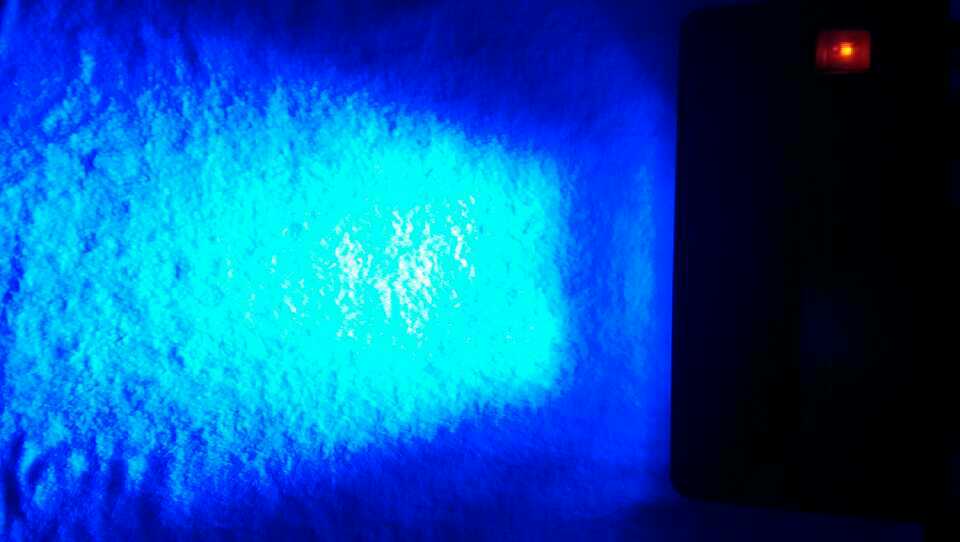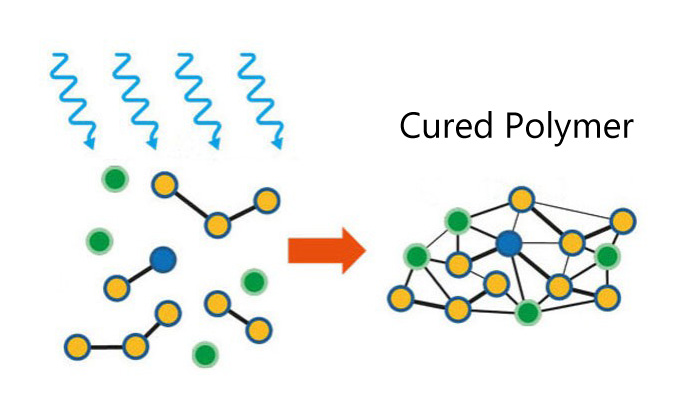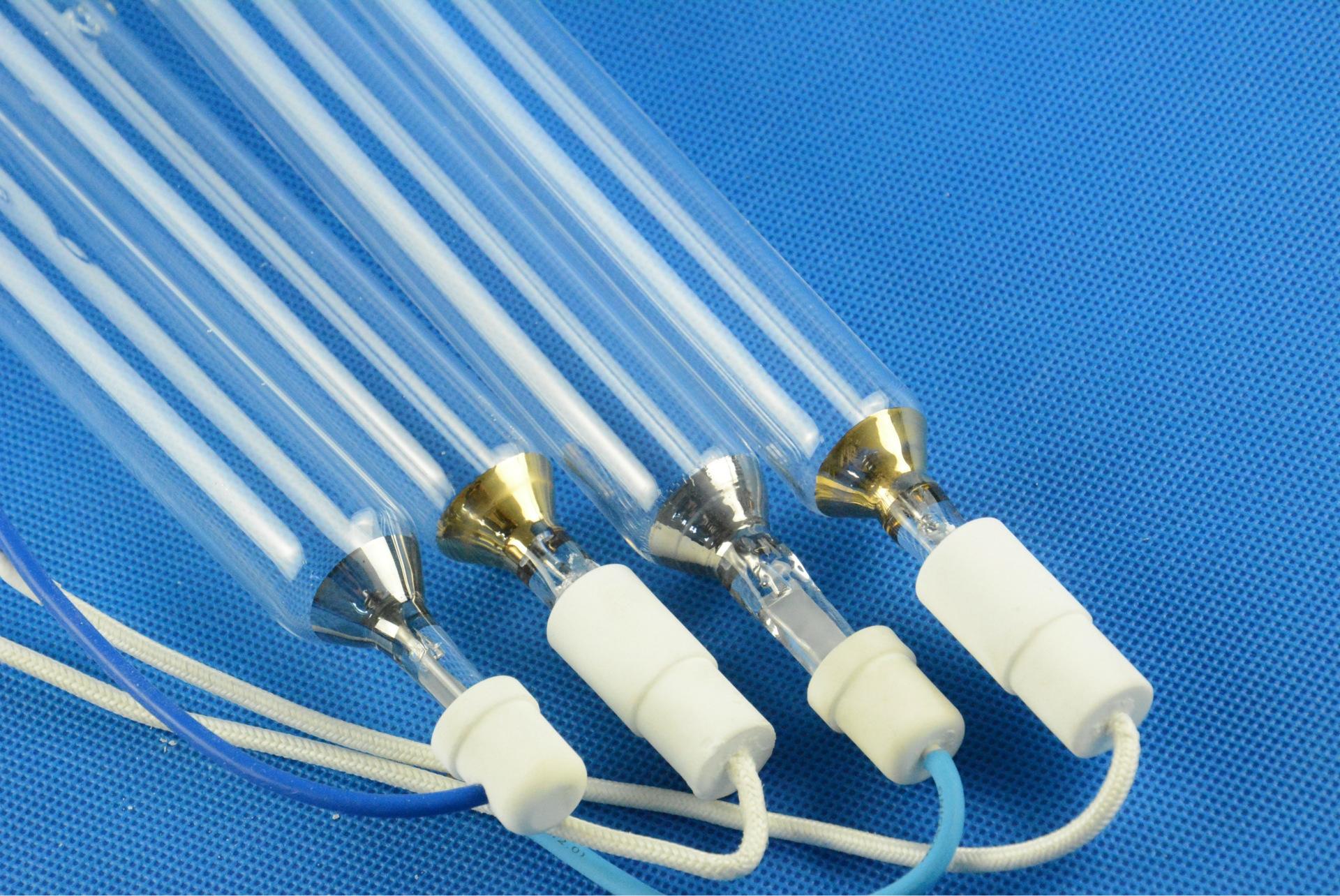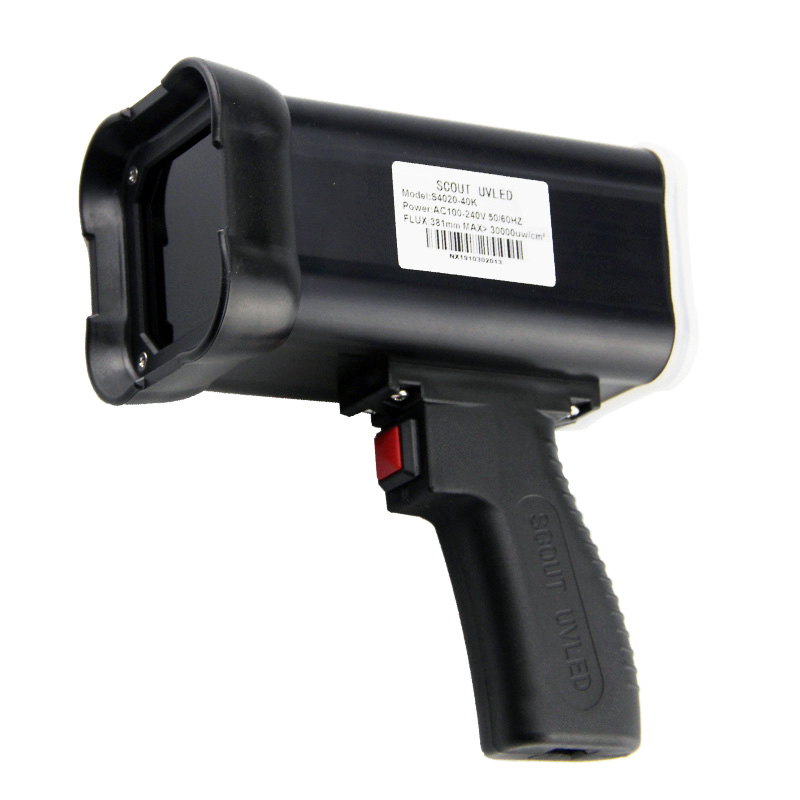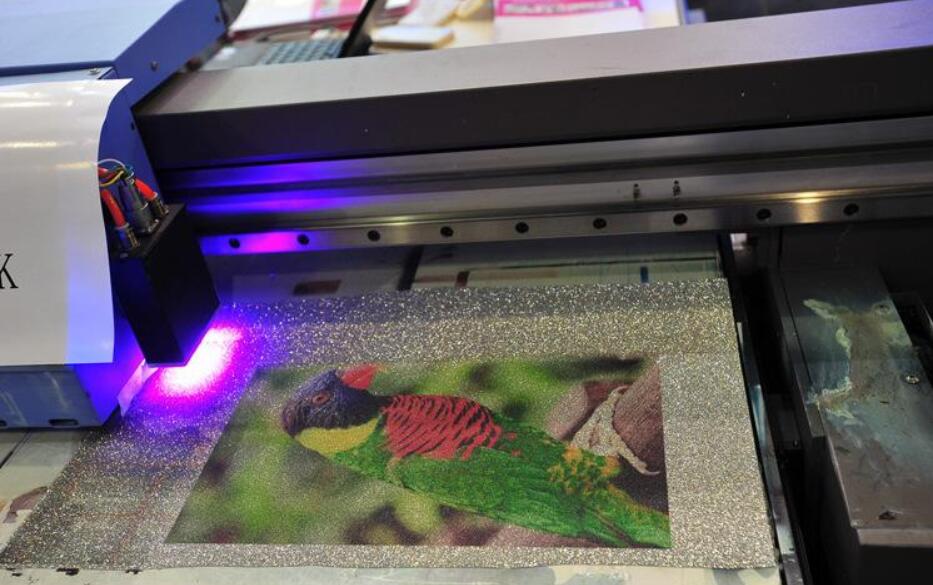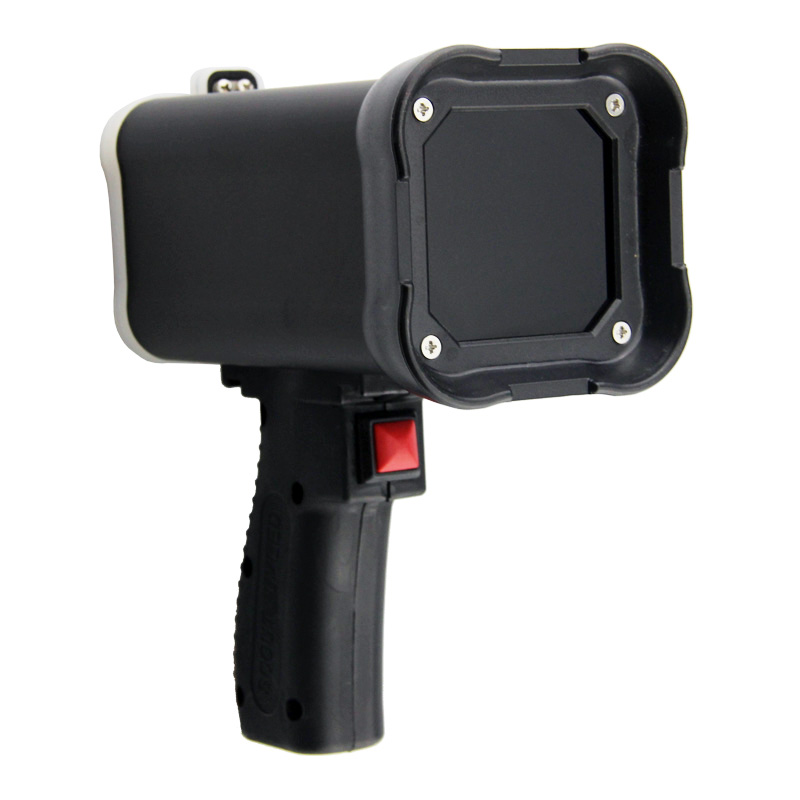1. What is UV curing?
UV is the abbreviation for ultraviolet light, curing refers to the process of transforming substances from low molecules to high molecules. UV curing generally refers to the curing conditions or requirements of coatings (paints), inks, adhesives (glues) or other potting sealants that need to be cured with UV light, which is different from heating curing, adhesive (curing agent) curing, natural curing, etc. UV curing means that under the irradiation of UV light, the photoinitiator absorbs the radiation energy of UV light and splits into free radicals, triggering the polymerization, cross-linking and grafting reaction of the prepolymer, which cures into a net-like polymer in a very short period of time, thus making UV coatings, inks, adhesives, etc. transform from liquid to solid in seconds.
2. What is the principle of UV curing?
The addition of photoinitiator (or photosensitizer) to the uniquely formulated resin, after absorbing the high intensity ultraviolet light in the UV curing lamps, produces reactive radicals, which trigger polymerization, cross-linking and grafting reactions, transforming the resin into a solid state in a very short time in the liquid state.
The UV curing process can generally be divided into the following five stages.
(1) Photoinitiator absorbs UV light and becomes an excited state photoinitiator.
(2) The excited state of the photoinitiator is unstable and easily decomposed to form free radicals.
(3) The free radicals interact with the unsaturated groups in the prepolymer to initiate addition, cross-linking or polymerization reactions to form free radical intermediates.
(4) Free radical intermediates are obtained by chain growth reaction to obtain long-chain or reticulated polymer free radical intermediates.
(5) The long-chain or reticulated polymer radical intermediates produce chain termination reactions, and the original liquid component is transformed into a solid polymer.
3. Types of UV Curing Lamps
The main light sources used for UV curing are UV mercury lamps and UV LED curing lamps. As is known, more than thirty years ago UV light was successfully promoted to commercial applications. Various adhesive manufacturers have developed a series of UV products for bonding, sealing, printing, etc. based on UV light curing characteristics and are widely used in many fields such as electronics, optics, printing, etc. These products in the UV light (a certain wavelength and a certain light intensity) irradiation, will cure or harden (polymerization), and with the traditional products – UV light curing more quickly and efficiently, energy saving and environmental protection. Equipment has also undergone continuous development and improvement process. UV Mercury lamp irradiation as the mainstream of the production process has been used for a long time. However, due to expensive equipment, high maintenance costs, UV mercury light intensity decay quickly, the surface temperature of the irradiated components, large size, expensive consumables, mercury pollution and other defects, the industry has been committed to improving, but because of the limitations of the original hardware has been difficult to break through.
The introduction of UV LED has brought revolutionary changes to the UV curing industry. UV LED Curing Lamps’ constant light intensity, excellent temperature control, portable and environmentally friendly features, but also relatively low procurement costs and almost zero maintenance costs, the UV curing process to improve the quality and energy saving to play a role in promoting.
4. Advantages of UV LED Curing Lamps
UV LED is a single wavelength of invisible light, generally below 420nm. There are mainly 365nm and 395nm. 365nm wavelength is generally used for UV adhesive curing. UV LEDs are specially designed to emit a complete continuous UV band to meet the production needs of edge sealing, printing and other fields.
Compared with UV mercury lamp, the advantages of UV LED Curing Lamps are as follows.
(1) Cold light source, no heat radiation: Low temperature rise on the surface of the illuminated items, solving the long-term problem of heat damage in the production of optical communication and liquid crystal, especially suitable for liquid crystal sealing, film printing and other occasions requiring a small temperature rise is applicable. Small heat generation, can solve the mercury lamp spray painting equipment heat generation, the staff can not bear the problem. And, UV LED light source, issued by the high-purity single-band ultraviolet light, almost no infrared output, it belongs to the cold light source, processing parts will not be deformed by heat.
(2) High efficiency: UV LED light energy is highly concentrated in a certain UV spectrum with effective curing effect, the actual use of the effect and light intensity of 1000 ~ 2000mW / cm² of the traditional high-pressure mercury lamp UV light source curing effect is comparable, thus shortening the curing time. The traditional mercury lamp UV light looks very bright, but the heat is very high, because its spectrum is very wide, the real effective curing effect of the UV spectrum only part of the energy, a significant part is in the visible section (stray light) and infrared spectrum (resulting in heat generation), the operator’s eyes are seriously damaged and easy to make the processing workpiece heat deformation.
(3) Long lifespan: UV LED curing lamp’s life is more than 10 times the traditional mercury lamp, and the service life is not affected by the number of switches.
(4) Instantaneous switching, no need to warm up to reach the maximum power UV output, and can be instantly restarted after shutdown.
(5) High energy, stable light output, good uniform irradiation effect, improve production efficiency.
(6) Can be customized for effective irradiation area, length from 20mm to 1000mm.
(7) Does not contain mercury, and does not produce ozone, is a safer and more environmentally friendly alternative to traditional light source technology.
(8) Low energy consumption, power consumption is only 10% of the traditional mercury lamp type curing machine, can save 90% of electricity.
(9) Maintenance costs are almost zero, using UV LED curing lamps to save at least USD 3000 per year / unit of consumables.
(10) Because the UV irradiation device and related supporting devices are very compact, without the previous kind of larger mechanical installation space and pipeline construction, simple and easy to set up. It can be said that the UV LED curing system further enhances the traditional UV curing system of environmental coordination. UV LED technology is an upgrade of the original UV technology.
5. Disadvantages of UV LED Curing Lamps
Compared with UV mercury lamp, the disadvantages of UV LED Curing Lamps are as follows.
(1) Surface curing problems: UV LED curing lamps irradiation intensity is weak, if the printing speed is too fast, will easily lead to incomplete curing of ink. For some UV coatings, LED UV curing will appear on the surface of sticky hands, this is due to the oxygen in the air will impede the reaction of free radicals, affecting the surface dry, resulting in sticky hands. The mercury lamp, because it contains low-band ultraviolet light, will react the oxygen into ozone, isolating the contact between UV coatings and oxygen. UV LED curing lamps do not contain UVB, UVC and infrared light, the LED wavelengths are more suitable for deep curing, while mercury lamps can cover all levels and areas.
(2) The price of UV LED curing lamps is relatively high due to technical limitations
(3) The existing printing machine is difficult to transform, this is because the LED-UV light source irradiation distance is short, and must be close to the surface of the substrate material irradiation, in order to ensure good curing of ink, so the existing printing machine transformation has brought great inconvenience.
(4) At present, if UV LED is used for batch curing, the cost performance is not suitable, and the power needs to be increased more than 100 times. For example, the mercury lamp used before is 12KW, but the current UV LED needs 1.2KW to be used. For small batch curing, you can use our S4020-40K handheld UV LED curing lamps.
6. Points to note when using UV LED curing lamps
(1) UV mercury lamp is the traditional technology, while UV LED is the technology that emerged later, the default curing method on the market is still UV mercury lamp curing. UV mercury lamp features a full wavelength, with 365nm as the center, between 350nm and 450nm are radiation. The traditional UV adhesive is designed for UV pump lamp curing, so the match is high and the curing is more thorough. UV adhesive on the market are very mature programs, and UV LED adhesive is far less widely used than UV adhesive. But like ordinary bonding, solder joint protection, touch screen SCA adhesive curing, OCA curing, etc. are no problem. It is understood that there seems to be no suitable UV LED glue developed for PCBA triple anti-glue application.
Why do customers often say that the surface is particularly sticky after curing with UV LED? Because UV adhesive is designed for mercury lamp development, in addition to the core of the 365 band, there are other energy radiation, so after curing with UV mercury lamp, the surface will not be sticky. The characteristics of UVLED is a single band, the current glue industry commonly used band of 365nm and 395nm, you use a single band of 365nm curing machine to cure UV glue is not completely cured, so there will be a sticky hand situation. The solution is to find a special UVLED glue, UVLED glue is developed for UVLED curing lamp, there will be no curing incomplete situation.
(2) The problem of matching photoinitiators: there are fewer photoinitiators that react to the UV light emitted by the LED-UV light source, so it is necessary to select photoinitiators with excellent reaction performance. photoinitiators for LED-UV inks not only need to have strong absorption of the narrow-band UV light energy emitted by the LED-UV light source, but also must achieve simultaneous curing of the ink surface and interior. Therefore, when selecting photoinitiators for LED-UV inks, it should be ensured that the photoinitiators have the best absorption characteristics at the specific wavelength of the LED-UV light source, and at the same time, the photoinitiator combination with the best ratio should be developed to absorb the limited UV energy as much as possible. Especially for transparent varnishes, it is necessary to find photoinitiators that can balance the yellowing and curing properties of varnishes within a limited range of photoinitiators.

